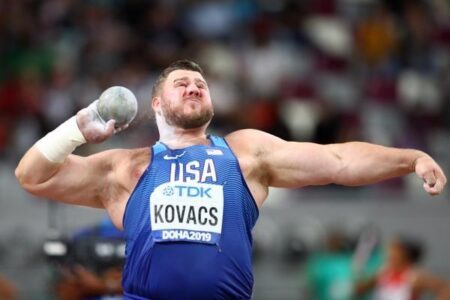The triple jump, a dynamic and demanding event in track and field athletics, continues to captivate audiences worldwide with its blend of speed, strength, and agility. As showcased on WorldAthletics.org, the global governing body for athletics, the triple jump remains a highlight of major competitions, drawing elite athletes who push the limits of human performance. This article explores the latest updates, records, and insights surrounding the triple jump, reflecting its evolving significance on the international stage.
Evolution of Triple Jump Techniques Shaping Modern Champions
Over the decades, the triple jump has transitioned from a rudimentary test of distance into a finely tuned display of athleticism and precision. Early techniques focused predominantly on raw power and simple hop-step-jump sequences. However, as sports science advanced, athletes and coaches began to experiment with enhanced biomechanical strategies that maximize momentum retention and reduce energy loss. This evolution saw the integration of phases like the hop phase being optimized for balance, the step phase for controlled speed, and the jump phase for explosive force. Today’s champions leverage video analysis, strength conditioning, and tailored training regimens that underscore the importance of rhythm and elasticity to achieve unparalleled distances.
Modern competitors also rely heavily on technical innovations that are reflected in various key aspects:
- Phase Distribution: Adjusting the proportional distances of hop, step, and jump phases to suit individual strengths.
- Foot Placement: Refining landing angles to improve takeoff efficiency and avoid fouls.
- Speed Generation: Maximizing approach run velocity without compromising balance during transitions.
| Era | Technique Focus | Notable Athlete | Record Impact |
|---|---|---|---|
| 1930s-1950s | Basic hop-step-jump | Naoto Tajima | World record improvements by ~1m |
| 1960s-1980s | Phase ratio optimization | Viktor Saneyev | Technical refinement and multiple Olympic titles |
| 1990s-Present | Biomechanical & training integration | Jonathan Edwards | Current world record at 18.29m |
Key Training Methods Enhancing Performance and Injury Prevention
Elite triple jumpers rely on a diverse blend of training techniques to maximize explosive power, speed, and coordination. Emphasis is placed on plyometric exercises to enhance muscle elasticity and ground reaction forces, vital for the hop, step, and jump phases. Sprint drills, combined with bounding workouts, help athletes build momentum and improve transition efficiency between each phase. Strength training targets the core and lower body, especially focusing on the glutes, hamstrings, and calves, which support both propulsion and injury resilience.
Injury prevention remains a cornerstone of any successful regimen, with recovery protocols carefully integrated into training cycles. Flexibility sessions, dynamic stretching, and proprioception exercises bolster joint stability and reduce the risk of common issues such as ankle sprains or hamstring strains. The following table summarizes the key training components and their functions:
| Training Method | Primary Focus | Injury Prevention Role |
|---|---|---|
| Plyometrics | Explosiveness & Power | Enhances muscle elasticity, reduces impact stress |
| Strength Training | Muscle Endurance & Stability | Supports joint alignment, prevents strains |
| Dynamic Stretching | Flexibility & Mobility | Increases range of motion, lowers tear risk |
| Proprioception Drills | Balance & Coordination | Improves joint control, avoids missteps |
Expert Tips for Aspiring Athletes Aiming for International Success
Mastering the technical finesse behind the triple jump is crucial for athletes who aspire to compete on an international stage. Focus on optimizing each phase – the hop, step, and jump – with precise body control and timing. Coaches often emphasize drills that improve coordination and explosive strength, such as bounding exercises and plyometric training. Equally important is maintaining a consistent approach run to maximize momentum without compromising form.
Beyond physical preparation, strategic competition experience and mental resilience underpin global success. Developing the ability to adapt to various venues, weather conditions, and judging standards can make a significant difference at high-level meets. Key focus areas include:
- Visualizing performance to enhance concentration and confidence.
- Analyzing video footage for technical adjustments.
- Nutrition and recovery tailored to sustaining peak physical condition during intensive competition periods.
| Aspect | Focus Area | Pro Tip |
|---|---|---|
| Technique | Phase transitions | Maintain balance after hop to prevent distance loss. |
| Training | Explosive power | Integrate weighted jumps and sprints thrice weekly. |
| Mindset | Consistent focus | The Conclusion
As the triple jump continues to evolve on the global stage, World Athletics remains at the forefront of promoting this dynamic event, celebrating the blend of speed, strength, and technique that defines its champions. With new talents emerging and records being challenged, the triple jump promises to remain a thrilling highlight in international athletics for years to come. Stay tuned to worldathletics.org for the latest updates, athlete profiles, and competition results. |





